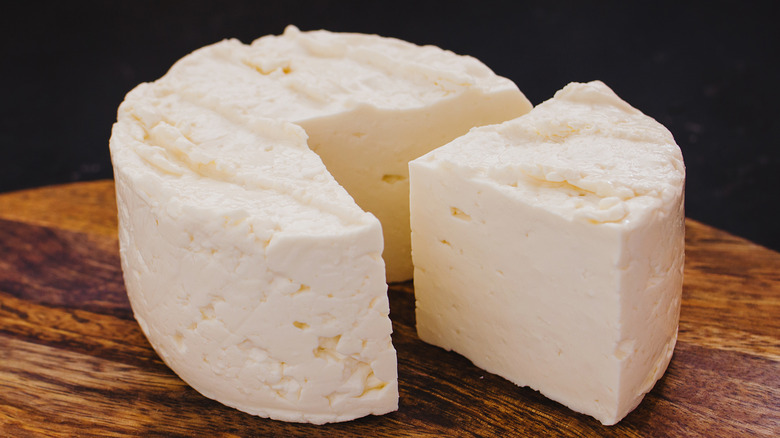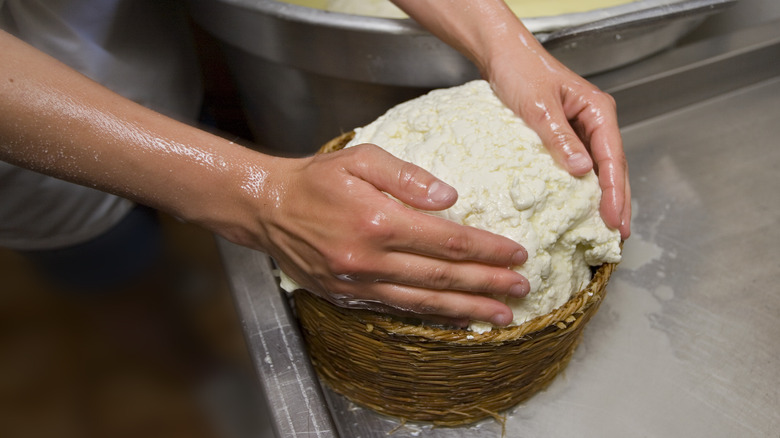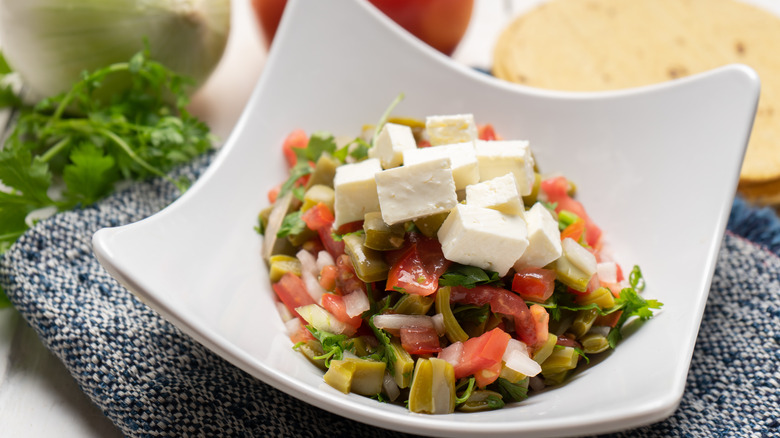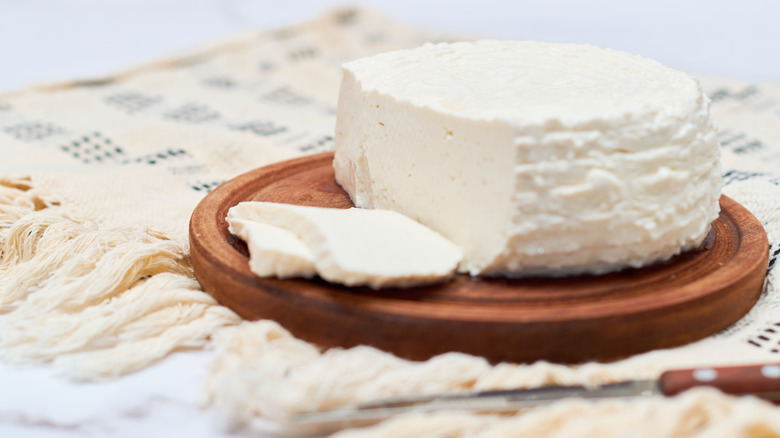Queso Panela Is The Mexican Cheese That Softens Nicely When Baked
It's hard to imagine Mexican cuisine without cheese — what are quesadillas, enchiladas, or tlayudas devoid of an irresistibly gooey component? And while crumbly queso fresco or stringy Oaxaca quesillo are often the first kind that comes to mind, numerous varieties exist.
In fact, over 40 different types of cheese are produced in Mexico. They cover a range of textures ranging from sour cream-like crema to aged queso de cincho cheese. Most are made fresh — typically with cow's milk — over a short creation time. Such is the case for queso panela, a semi-soft cheese popular around all of Mexico. Also known as "queso de canasta," which translates to "basket cheese" in Spanish, this milk creation is traditionally formed in such a woven vessel.
Queso panela seamlessly integrates into many dishes with its mild, slightly salty taste. Plus, it has a low-fat content, which causes it to soften rather than melt when heated. Thrown on the grill or into the oven, its soft, spreadable quality brings out its best attributes. Let's dive into what it's all about.
How queso panela is made
Queso panela is a fresh cheese that's manufactured in a process similar to mozzarella or halloumi. It's made with curds, which gives it its smooth, slightly chewy texture. The process begins with skim milk — which is often raw to increase the availability of proteins for curd production.
First, the milk is heated in a pot to a temperature of 95 degrees Fahrenheit. Simultaneously, an enzyme called rennet — responsible for the milk's coagulation — is dissolved into cold water. The enzyme is mixed into the milk and left to stand alone for around half an hour. After the curds float into a thick layer on top, they're ladled into a cheesecloth. A couple of teaspoons of sea salt season the mixture, and it's left to dry for a couple of hours, tied together as a ball.
Most of the whey will drain from the cheese, but it's vital some moisture remains; otherwise, the cheese will dry out. To achieve the cheese's iconic shape and texture, it's traditionally molded into a basket. The resultant panela cheese is then ready for consumption. The whey can be utilized for other cheese-based products such as ricotta-like queso requesón.
How to cook with queso panela
Queso panela is incredibly versatile, melding well with many applications. Just like other fresh cheeses, it's delicious sprinkled as a topping. Garnish classic Mexican dishes like enchiladas, mole, tacos, and more. Alternatively, cut it into pieces and add it to tortas or even atop a salad.
Or invigorate queso panela with some heat. It doesn't melt, but it turns soft and gets colored on the exterior. Thrown on the grill or pan-fried, it makes for a delicious filler for tacos or as a standalone appetizer reminiscent of halloumi. For an extra gooey result, fry the cheese in olive oil — creating a delectable caramelized crust. Since its flavor is mild, amplify it with a colorful salsa when serving.
For the softest version of queso panela, throw the cheese in the oven. Dressed with aromatics and a bit of oil in a ceramic vessel, the panela melts to a delectably spread texture. It makes for a delicious shareable appetizer as a dip for chips or bread.
Where to buy queso panela
Queso panela can be purchased at Mexican grocers, as well as online. It's also available in some major U.S. stores, such as H-E-B. When located in Mexico, head to a local market — there will nearly always be a cheese vendor.
Alternatively, it's not difficult to craft your own queso panela at home. The only obscure ingredient is rennet — which can be purchased at specialty grocers. Vinegar and yogurt can also be substituted as an agent of coagulation. Invest in high-quality milk — it makes a considerable difference in the resultant product. And for a different flavor palette, craft a rendition with sheep's or goat's milk.
When crafting queso panela, be extra vigilant with sanitation, cleaning all utensils and vessels with a solution. External bacteria can ruin the cheese-making process and decrease storage time. To separate from any foreign contamination, store homemade or purchased panela in an airtight container. It'll last in the refrigerator for around a week.



